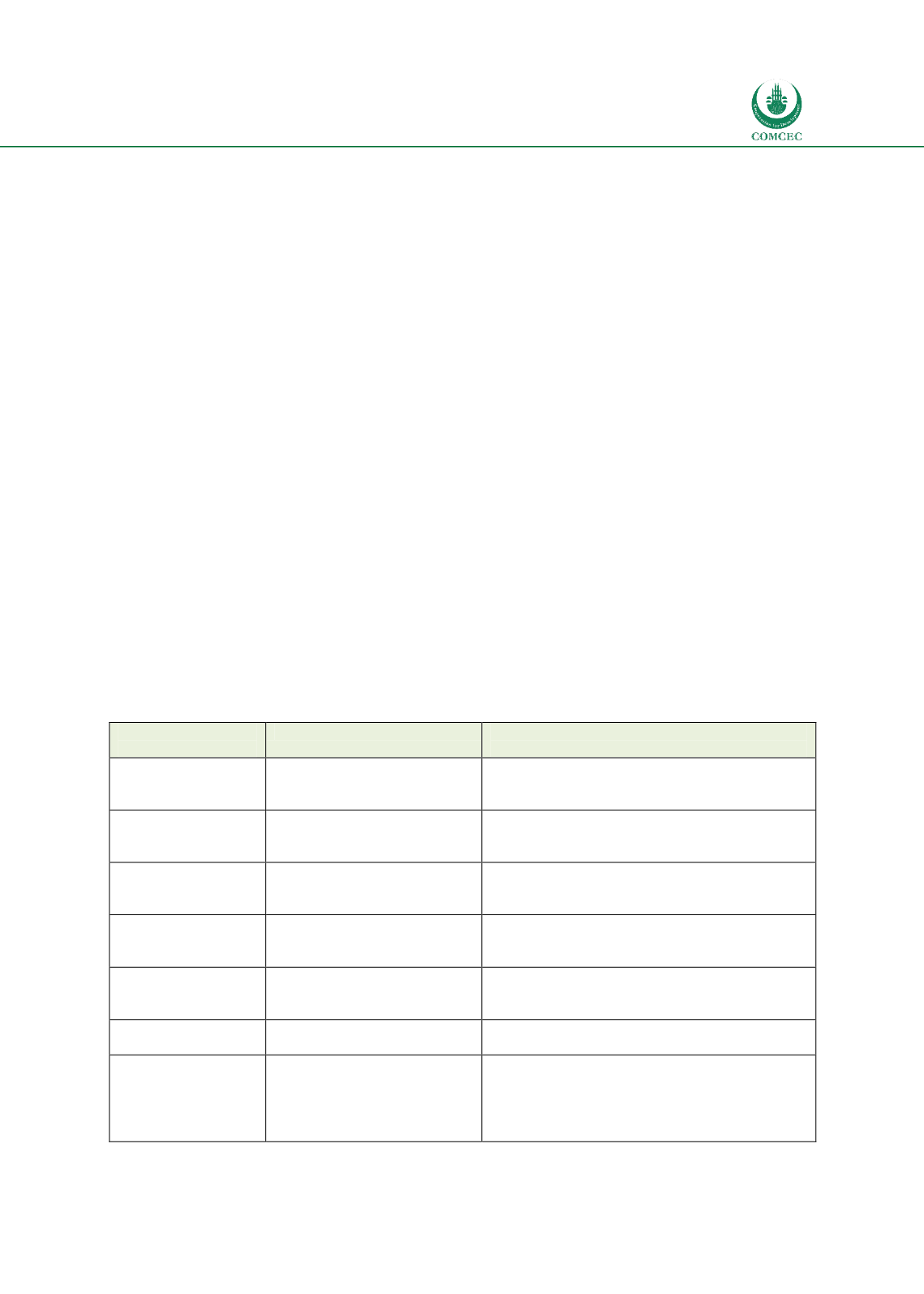

National and Global Islamic Financial Architecture:
Prolems and Possible Solutions for the OIC Member Countries
227
have separate divisions within the IFSB dealing with issues related to Islamic banking, takaful
and Islamic capital market segments. Both AAOIFI and IFSB have published Shariah
governance standards for Islamic financial institutions. However, there are no guidelines for a
national Shariah board. Given that national Shariah boards can contribute to harmonization of
practice and reduce Shariah compliance risks within jurisdictions, there is a need to come up
with a framework for it. Furthermore, the work on developing Shariah standards, parameters
and templates for Islamic financial products by AAOIFI, IsFA and IIFM need to continue to
enhance cross-border and international transactions by reducing legal and Shariah compliance
risks.
Though the sukuk market is growing, its size is still small in terms of global financial markets.
Globally the secondary markets for sukuk in most countries are shallow making them illiquid.
Although LMC and IILM are making available tradable
sukuk
catering to the liquidity needs of
Islamic financial institutions, the supply of instruments that fulfil the Basel III liquidity
requirements is small relative to the demand. Furthermore, IFSB and IIFM can develop
guidelines and templates to strengthen money markets, secondary markets for Islamic
securities and LOLR facilities for Islamic banks. Furthermore, there is a need to establish an
Islamic Monetary Fund (IsMF) that can either provide Shariah compliant liquidity at the global
level or coordinate arranging liquidity from other central banks by using swap arrangements.
There is significant progress made in developing accounting and auditing standards by AAOIFI.
Furthermore, AAOIFI and IFSB has also published disclosure guidelines for the banking and
takaful sectors. However, there is a need to develop detailed disclosure guidelines for Islamic
capital markets and Shariah compliance of products and securities. Ratings agencies that can
assess Shariah compliance and risks in equity based instruments would further strengthen the
information infrastructure for the industry.
Table
8.2: Status and Responsible Stakeholders and the International Level
Infrastructure
Institutions
Gaps
Suggested Institutions and Initiatives for
Islamic Finance
Legal Infrastructure
Develop model Islamic
financial, tax and bankruptcy
laws
Create a new body/entity Stability Board for SBIF
(either by OIC/COMCEC or D-8)
IDB can initiate Islamic Law & Policy Program
Regulation &
Supervision
Framework
Strengthen existing institutions
and encourage implementation
of International standards.
Strengthen IFSB (have three Assistant Secretary
Generals for Banking, Takaful and Capital
Markets)
Shariah Governance
Regimes
Strengthen existing institutions
and encourage implementation
of International standards.
SBIF coordinate the Shariah issues with AAOIFI,
IsFA, IFSB and IIFM
Liquidity
Infrastructure
Strengthen existing institutions Establish IsMF to develop liquidity management
framework in coordination with IDB IFSB, IIFM,
IILM and LMC
Information
Infrastructure &
Transparency
Strengthen existing institutions
and encourage implementation
of International standards.
SBIF coordinate accounting and auditing issues
with AAOIFI, IFSB and IIRA
Consumer Protection
Architecture
Create new and strengthen
existing institutions
SBIF coordinate accounting and auditing issues
with IFSB, CIBAFI, IADI
Human Capital &
Knowledge
Development
Create new and strengthen
existing institutions
SBIF and IDB can coordinate with AAOIFI, CIBAFI,
GIFDC, IDB, IFSB SBIF and IsMF and develop
technical assistance programs to enhance
knowledge and skills related to Islamic financial
architecture
















